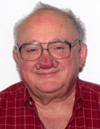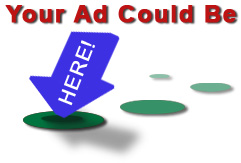The Aces on Bridge: Sunday, November 28, 2010
| Dear Mr. Wolff:
Today’s bidding sequence went around the table: 1 ♦ – ♠ – 2 ♥ – Pass – 3 ♥ – Pass. You wrote that the call of three hearts was not forcing. Does this imply that if opener had rebid three diamonds or two no-trump instead, that would also be nonforcing? Equally, does this mean that both three clubs and a cuebid of two spades are forcing bids, with the latter requesting a stopper? — Who’s on First?, Naples, Fla.
ANSWER: Absolutely right, and very clearly and concisely expressed. Any action by either opener or responder that sounds nonforcing at the second turn will indeed be nonforcing. The cuebid initially asks for a stopper, but may conceal a strong hand with support. A direct three-level (as opposed to two-level) action by responder should be played as game forcing, though.
Dear Mr. Wolff: Holding ♠ K-9-3-2, ♥ Q-2, ♦ A-10, ♣ A-10-8-4-3, I opened one club and heard one diamond to my left. My partner bid one spade, the next hand bid three diamonds, and I joined in with three spades. The next thing I knew, my partner had the five-spade bid on the table. What does that mean? I thought my trumps were not good enough to go on, but slam was cold our way. — Timid Tim, Staten Island, N.Y.
ANSWER: When the opponents bid a suit, as here, one should play jumps to the five-level in a major to ask for a control in their suit, not for good trumps, unless one member of the partnership has already announced a control in the danger suit. Here, partner wanted a diamond control, and your choice is to cue-bid six diamonds to announce a first-round control, or to cautiously raise partner to six spades because your hand is minimum in other respects.
Dear Mr. Wolff: What card should you lead from a six-card suit if playing third-and-fifth or third-and-low leads? If the answers are different, which do you recommend? — Get the Lead Out, Vancouver, British Columbia |
ANSWER: From a theoretical viewpoint, the answer is not close. Third-highest leads (as opposed to fourth highest) are designed to make it easy to distinguish the length held by the opening leader immediately. Leading the four from both Q-10-8-6-4-2 and the same holding without the two violates the whole principle of the lead system. I’d lead third highest from both four and six cards and low from three or five cards.
Dear Mr. Wolff: Holding ♠ K-J-10-3, ♥ A-10-8-6-4-3, ♦ Q-3-2, ♣—, would you pass or would you open some number of hearts in first seat? Would the vulnerability or form of scoring matter? — High Hopes, Monterey, Calif.
ANSWER: Two hearts is out of the question. If you are not playing Flannery (few do these days, whatever its technical merits), your choice is to open one heart (and be stuck for a satisfactory call if partner responds one no-trump), or to pass and hope to make up for it later. I say “Thrice blest is he who strikes the first blow” and open one heart.
Dear Mr. Wolff: My partner told me that occasionally the response of two no-trump to a takeout double is not natural. I know that some play Lebensohl after the double of a weak two-bid, but this was a more complex sequence. Please explain the idea of a scramble. — Escape Artist, Waterbury, Conn.
ANSWER: If you pass initially, then balance with a double of a two-level bid, your side will rarely want to play game, but it may not be clear to partner what his side’s best fit is. He can offer a choice of the minors (or two lowest unbid suits) with a call of two no-trump. If he subsequently corrects his your response to the next suit up, it shows the other two suits. This approach also works with a response of four no-trump to a takeout double, but three no-trump is always to play. |
For details of Bobby Wolff’s autobiography, The Lone Wolff, contact [email protected]. If you would like to contact Bobby Wolff, please leave a comment at this blog. Reproduced with permission of United Feature Syndicate, Inc., Copyright 2010. If you are interested in reprinting The Aces on Bridge column, contact [email protected].


